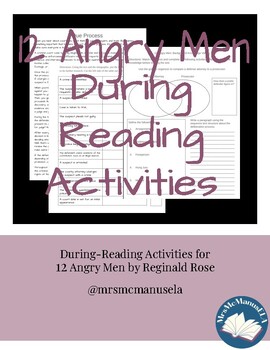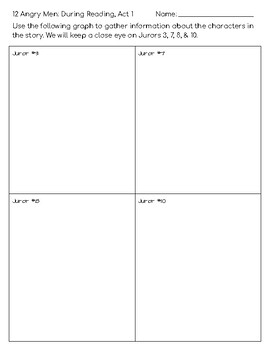12 Angry Men - Making Inferences about Characters, Tracking Evidence & Comparing
- PDF
Also included in
- This bundle includes fifteen activities for before, during and after reading 12 Angry Men by Reginald Rose AND a book club mini unit with all necessary resources and writing choice board with nine options.It covers more standards than any one unit I have ever written.Don't forget to leave a review tPrice $10.99Original Price $14.97Save $3.98
Description
12 Angry Men by Reginald Rose is the perfect text to analyze how an author develops characters. Each juror in the story brings a plethora of experiences and biases to the table. The activities provided here help students to analyze four of the characters, as well as the evidence that they are analyzing, to determine what kind of people the jurors are and whether the defendant is guilty of the crime.
Included in the download are:
1. three bellwork/do now activities
2. two character analysis activities
3. a character/evidence tracker
4. a script vs. play Venn diagram
Check out my pre-reading and after reading activities as well.
Don't forget to leave a review to earn credits for future purchases.
Follow my store to be informed when I add new products.
And please reach out to me on Instagram! I would LOVE nothing more than to see this in action in your classroom.






